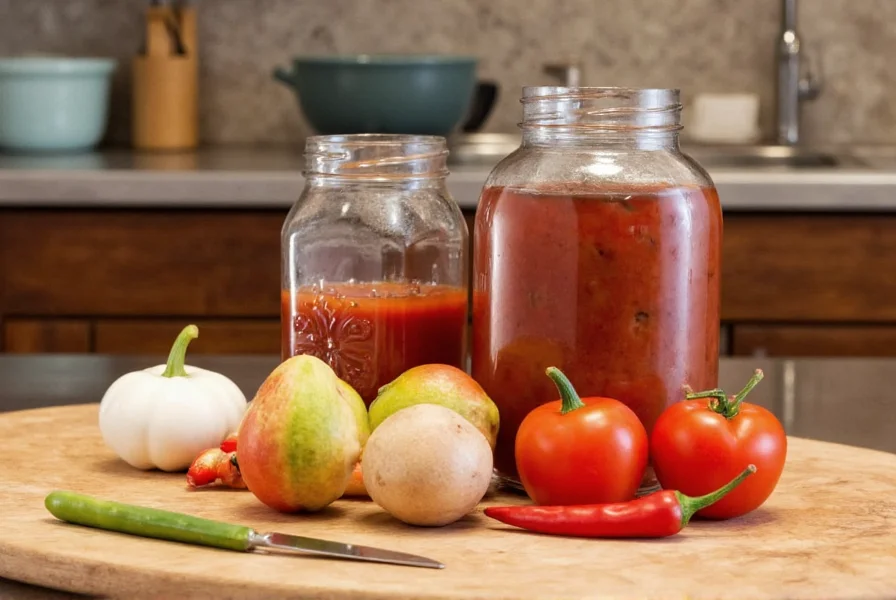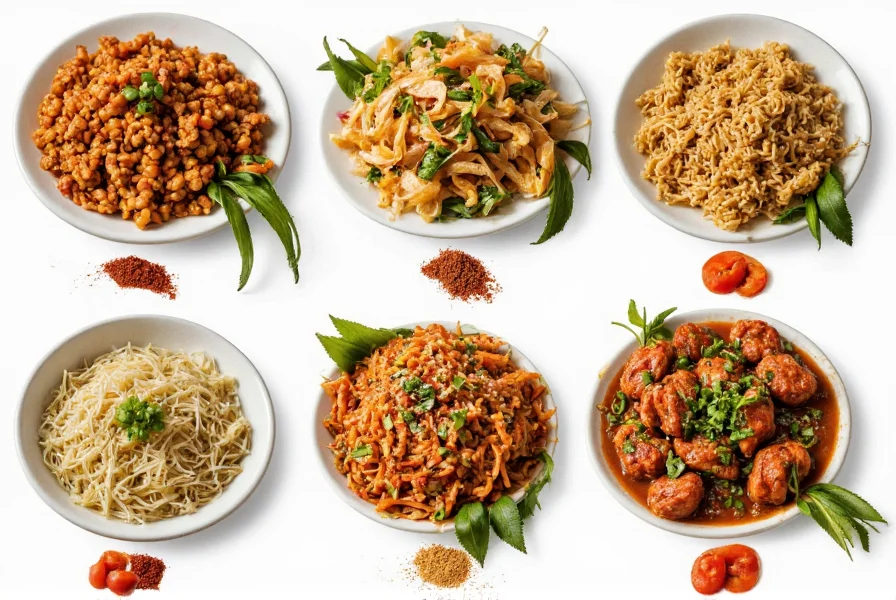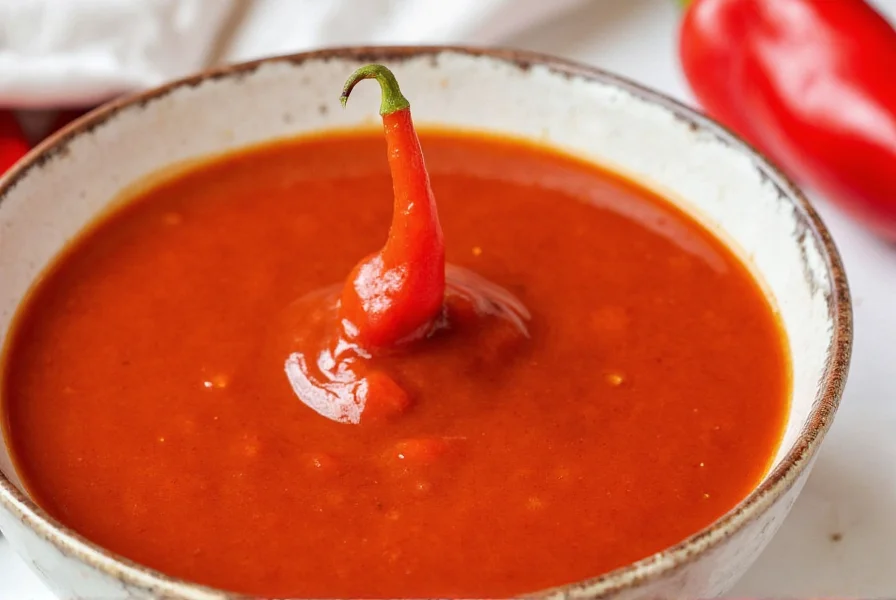When you're in the middle of cooking and realize you're out of chili sauce, knowing reliable substitutes can save your recipe. Chili sauce brings a distinctive sweet, tangy, and mildly spicy flavor to dishes like stir-fries, marinades, and dipping sauces. Understanding what creates its unique profile helps you recreate it with common pantry ingredients.
What Makes Chili Sauce Unique
Chili sauce typically contains tomatoes, vinegar, sugar, garlic, and red chili peppers. Its balanced flavor profile combines sweet (from sugar or tomatoes), tangy (from vinegar), and mild heat (from chili peppers). Unlike hot sauce, chili sauce has more sweetness and body, making direct substitutions require careful balancing of these elements.
Top 5 Chili Sauce Substitutes
Each substitute works best in specific applications. Consider your recipe's requirements when choosing which alternative to use.
| Substitute | Ratio | Best For | Flavor Notes |
|---|---|---|---|
| Ketchup + Hot Sauce | 1:1 ratio | Stir-fries, marinades | Add 1 tsp sugar if recipe needs more sweetness |
| Sriracha + Sugar | 1 tbsp sriracha + 1 tsp sugar | Dipping sauces, glazes | More garlicky than traditional chili sauce |
| Tomato Paste Blend | 1 tbsp tomato paste + 1 tsp vinegar + 1 tsp sugar + pinch red pepper | Cooking applications | Thicker consistency, adjust liquid as needed |
| Hoisin Sauce | 1:1 ratio | Asian-inspired dishes | Sweeter and less acidic than chili sauce |
| Chili Garlic Sauce | 1:1 ratio | Spicy applications | More heat, less sweetness - add sugar to balance |
Creating the Perfect Homemade Substitute
For the most accurate chili sauce replacement, make this simple blend:
- 2 tablespoons tomato paste
- 1 tablespoon water or broth
- 1 teaspoon vinegar (rice or apple cider)
- 1 teaspoon sugar or honey
- 1 small garlic clove, minced
- 1/4 teaspoon red pepper flakes
- Pinch of salt
Mix all ingredients in a small bowl until smooth. This easy chili sauce substitute with pantry ingredients works well for most recipes calling for 1-2 tablespoons of chili sauce. For larger quantities, scale up proportionally.

Recipe-Specific Substitution Tips
Not all substitutes work equally well in every application. Consider these recommendations for best results:
For Stir-Fries and Sautés
Use the ketchup and hot sauce combination (1:1 ratio). The ketchup provides body while the hot sauce adds necessary heat. This best chili sauce substitute for stir fry maintains the right consistency without making your dish too watery.
For Dipping Sauces and Marinades
Combine sriracha with a touch of sugar and rice vinegar. The garlic-forward flavor works well for dipping applications. This chili garlic sauce alternative creates a more complex flavor profile that complements spring rolls and dumplings.
For Baking and Glazing
When substituting in recipes where chili sauce is used as a glaze (like meatloaf or baked chicken), use hoisin sauce. Its thicker consistency and sweet profile make it an excellent replacement that won't burn during cooking.

Adjusting Flavor Profiles
After substituting, you may need minor adjustments:
- Too sweet? Add a splash of vinegar or lemon juice
- Not spicy enough? Increase red pepper flakes gradually
- Too thin? Simmer to reduce or add tomato paste
- Missing depth? Add 1/4 tsp soy sauce or Worcestershire sauce
Remember that different brands of chili sauce vary in sweetness and heat, so your substitute may need tweaking based on what you're accustomed to using.
Common Substitution Mistakes to Avoid
Even with the right ingredients, these errors can ruin your dish:
- Using straight hot sauce without balancing sweetness
- Substituting chili powder (too dry, lacks liquid component)
- Using sweet chili sauce as a 1:1 replacement (it's much sweeter)
- Adding substitutes at the wrong cooking stage
For most recipes, add your substitute near the end of cooking to preserve flavor integrity. When making healthy chili sauce alternatives, reduce sugar but maintain the acid-sweet balance with apple cider vinegar and a touch of honey.
Frequently Asked Questions
Can I use ketchup alone as a chili sauce substitute?
Ketchup alone lacks the heat component of chili sauce. For better results, combine ketchup with hot sauce in a 1:1 ratio. Add a pinch of red pepper flakes if you need more heat without additional liquid.
What's the difference between chili sauce and chili garlic sauce?
Chili garlic sauce contains more garlic and has a thinner consistency with stronger heat. When substituting chili garlic sauce for regular chili sauce, use a 1:1 ratio but add 1 teaspoon of sugar per tablespoon to balance the increased heat and acidity.
Is there a gluten-free chili sauce substitute?
Yes, most homemade substitutes are naturally gluten-free. Use tamari instead of soy sauce if needed, and verify that your hot sauce and vinegar are gluten-free. The tomato paste blend (tomato paste, vinegar, sugar, garlic, and red pepper) makes an excellent gluten-free chili sauce substitute.
How much substitute should I use when replacing chili sauce?
Use a 1:1 substitution ratio for most alternatives. However, if using straight hot sauce, start with half the amount and adjust to taste, as hot sauce lacks the sweetness and body of traditional chili sauce.
Can I make a low-sugar chili sauce substitute?
Absolutely. Replace sugar with a small amount of honey or omit it entirely for savory applications. Increase tomato paste slightly to maintain body, and use a touch more vinegar to balance flavors. This creates a healthier option while preserving the essential flavor profile.











 浙公网安备
33010002000092号
浙公网安备
33010002000092号 浙B2-20120091-4
浙B2-20120091-4